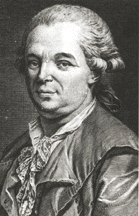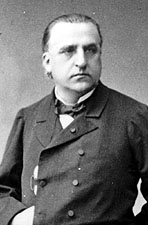More than 4000 years ago, the founder of chinese medicine Wang Tai, used the power of speech to heal diseases. Some hieroglyphes found on egyptian sepulchres dating from 3000 B.C give evidence of the use of hypnosis then.
In the Bible, the first allusion to the use of Hypnosis can be found in Genesis, 2 :21 : ‘ And the Lord God caused a deep sleep to fall on Adam, and he slept ; and He took one of his ribs, and closed up the flesh in his place.’ In this episode, God used Hypnosis as an anaesthestic so that Adam wouldn’t suffer. Some think that the sleep of Saul(Samuel, 26, 12) and Job (4, 13, 33, 15) are similar to the state of Hypnosis.
And some think that Jesus brought people to a trance state to heal them.
The Temples of Sleep : Those from the Egyptians, the Greeks and the Romans are the oldest proofs of the existence of a form of Hypnosis. Usually built along the Nile, Egyptians temples appeared around the 5th century B.C They were dedicated to the deity of fertility Isis, to whom it was attributed to heal people. During the ritual, a priest would bring the person into a magnetic sleep.

The inductions used in the temples were very similar to techniques used by austrian physician Franz Anton Mesmer (1734-1815, see picture at right) : the laying on of hands, the use of physical magnetism, the focalisation of visual attention and the use of music.
Greek patients were allowed in the chamber of sleep called Abaton after physical and spiritual purification.
Modern Hypnotherapy began in the 18th century when Mesmer arrived in Paris and developed his theory called ‘ animal magnetism ‘. He was then looked over as an impostor, but is now recognized as a pioneer of Hypnotism and Psychotherapy.
He believed that ilnesses were derived from a magnetic imbalance in people. He would, with long complicated movements rebalance the magnetism of the person.. But what he didn’t know was that he brought people into a trance like state which enabled them to use their subconcious to obtain healing.
Unfortunately, he was extremely unpopular with the medical corporation and they managed to ruin is reputation. He then left Paris but his disciples kept his methods alive.
The Esdaile Method : The scottish surgeon James Esdaile (1808-1859) carried out more than 250 operations. He carried out amputations and removed tumors solely using Mesmerism as an anaesthetic. He discovered that when he magnetized a patient to neutralize pain, redness and swalloness disappeared as well. This method could have been developed if Chloroform hadn’t been discovered.
The revival in the interest for Hypnosis is due to James Braid (1795-1860) a scottish ophtalmologist. He invented the word Hypnosis from the greek Hypnos ’sleep’. It was the first time that anyone was looking into physiological and anatomical facts. After his death the interest for Hypnosis in Great Britain decreased.

At the end of the 19th century, a certain number of french scientists started to be interested in Hypnotism. The most famous was the neurologist Jean-Martin Charcot (1825-1893, see picture at right) who worked with hysterical patients in the Salpetriere Hospital in Paris. He thought that Hypnosis could only affect people who had pre -existing mental conditions. His student, Pierre Janet realised that Hypnosis was the result of a ‘disassociation’ when a part of the brain is functioning independently from the other one.
Auguste Ambroise Liebault (1823-1903) and Hyppolyte Bernheim (1837-1919) were the first ones to consider Hypnosis as a normal phenomenum. They thought they could use it as a therapeutical means.
In 1892, Hypnosis was recognised by the Association of British Medicine
The neurologist Sigmund Freud (1856-1939) began to be interesetd in Charcot’s work which inspired him the Psycho-Analysis theory. He realised that our conscious state was actually masking another one, which was affecting our behaviour. He always refused to use Hypnosis with his patients.
During both World Wars, Hypnotism was widely used to treat soldiers coming back from the front. Around 1955, the Association of British Medicine recognised Hypnotherapy as a medical treatment as well as the Association of American Medicine in 1958.
The 1960’s mark the beginning of the golden era of Hypnosis. Little by little Hypnosis is used to stimulate creativity and motivation as well as to help people contolling their habits.
The work of the american psychiatrist Milton Erickson (1901-1980) demonstrated that Hypnosis can be used in more creative ways.
And there is very little difference between a trance state provoked by the dance ritual used by the American Indians and Firewalkers who use Auto-Hypnosis in order to manage pain.
All along History , the secrets of Hypnosis were only known by a small elite which contributed to its mysterious aura.